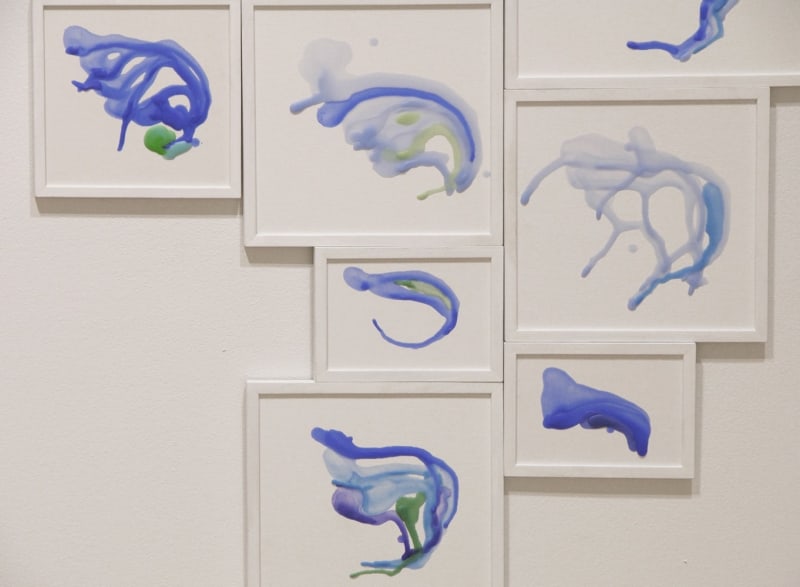
FORT WORTH Ranjani Shettar’s first solo museum show included three impressive multipart sculptures. Two works on paper, a cluster of wax-dribbled sheets and an 8-foot-tall print containing a stream of red, green and brown pigments functioned as supporting material. Although in sympathy with recent sculptural trends in the use of common materials and irregular, anti-minimalist shapes, the sculptures of this young artist from Bangalore, India, offer a welcome emphasis on refined craftsmanship.
Me, no, not me, buy me, eat me, wear me, have me, me, no, not me (2007) consists of five steel cornucopia-like structures scattered about the floor. Meticulously woven from inch-wide strips of steel rescued from junked cars, the bulging, hollow forms are flecked with chipped paint in muted colors and a mottled patina of rust. Ranging in size from about 3 to 6 feet long, the latticework structures recall the reclining bodies of seals or walruses, with arching backs, gaping mouths and twisted hind flippers.
Sun-sneezers blow light bubbles (2007-08) is marked by golden translucency and gentle kineticism. Its title a reference to reflexive sneezing caused by sunlight, the work consists of several intricate forms, each hanging from a single filament to create a floating tracery. They are constructed of stainless-steel wire wrapped with muslin and tinted pale beige, cream and burnt yellow, using tamarind kernel powder paste and lacquer. Overhead, cascading circles and ellipses create delicate openwork abstractions reminiscent of trailing peacock tails. Suspended below these structures, large spheres made from small circles appear to multiply like a chain of bubbles, while a few stray complexes of circles rest on the floor. The movement of air causes the globes to slowly rotate. Enhanced by looping shadows, Sun-sneezers is buoyant and life-affirming.
At once organic and aerodynamic, Liquid walk on my wall (2008) virtually glides across the wall just above eye level. Sleekly carved from Burmese teakwood, seven bulbous ellipses with rippling contours form a row that turns a corner of the gallery. The unique shape of each element follows the wood’s grain, which is enhanced by golden brown lacquer. Punctuated by gracefully carved and smoothly sanded holes and concavities, the polished surfaces are also sprinkled with a few blue glass beads, recalling bubbles streaming from a swimming fish. While the title evokes footprints of a figure striding through mud, the loving treatment of the wood conveys a tactile eroticism. Shettar has the ability to infuse inert materials with life.
-Frances Colpitt